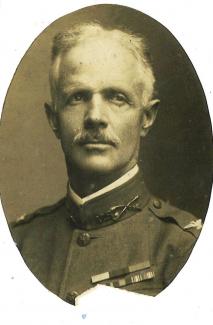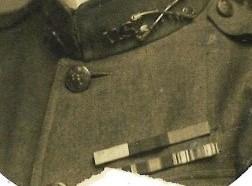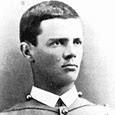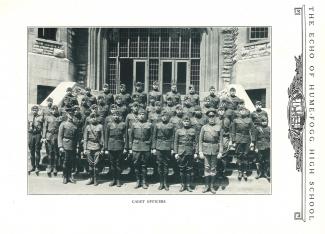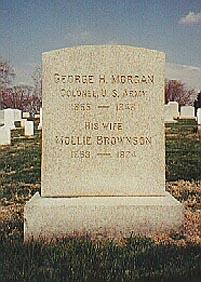
About the time the saber tooth tiger living in the cave under the UBS Tower fell over dead, (a whole different blog) I entered an ROTC program. Our commander was a retired, and very refined, Colonel whose leadership was superb. He came to mind as I was doing conservation work on a large Hume-Fogg student composite.
These composites are made of up 3x3 inch images of the students, faculty, and staff mounted to a large cardboard stock paper. The 1925 composite was in very poor condition, so the images were removed, scanned, and filed in acid-free sleeves.
Usually military instructors in the inter-war period had no medals or ribbons. However, this guy had two rows of ribbons, hence the ROTC thought. The image of Colonel George H. Morgan, silver eagles on his shoulders, crossed swords on his collar, and a nice set of ribbons, was titled “Colonel G. H. Morgan, Military Science.”
The US Army in 1925 was very small at 137,000 soldiers. For a comparison, in 1945 there were 8 million. Before WW2, many of the officer corps were West Point graduates who knew each other.
A full Colonel in 1925 was a demi-godlike figure steeped in the traditions of the military. Wondering why he would accept a position at an unknown high school in small town Nashville led to some interesting research.
Enlarging the scan, his ribbon bar started with something astonishing. Check out the first ribbon (top left is always highest award). See that ribbon, the pale color with what looks like white dots on it? That is the Medal of Honor! I was astounded. A Medal of Honor winner teaching military science at Hume-Fogg high school? This story had to be dug out.
According to Cullum’s Register (officially known as the West Point Register of Graduates and Former Cadets) George Horace Morgan graduated West Point, class of 1880. He joined the 3rd Cavalry and was combat wounded during the Apache Wars. A bullet was lodged too close to his heart to be removed. However, that action earned him the Medal of Honor.
He served well and honorably until 1919. Why he came to Nashville is a mystery. None of his online biographies include Nashville. However, he shows up in the City Directory for 1924.
Around 1925, the Hume Fogg ROTC rifle team beat West End High School ROTC. There was quite a rivalry each year in the military rifle competition held on the open fields near West End High School. It might be fun to recreate in 2025, but give up on asking for a permit. The people at the Courthouse will give you strange looks and call security. (It was just a big misunderstanding, but I can't go back to the Courthouse for a while)
The first thing uniformed military folks do when gathering is to check out each other’s medals. So, let’s do that with Morgan. First and before all other medals, awards, and decorations is the Medal of Honor, then the Silver Star (awarded twice), and then the Purple Heart. Following those medals are campaign medals for the Apache Wars, the Spanish-American War, the Philippine insurrection and World War One (not sure of the order).
Colonel Morgan taught here for only two years. He left Nashville around 1926, finally settling in Washington, D.C. In later years, he attended West Point Academy graduations as the oldest living graduate. In February 1948, some accounts state that a fall and broken shoulder caused the bullet he carried near his heart from a battle 60 years earlier to shift, contributing to his death at 93. He is buried at Arlington National Cemetery.





